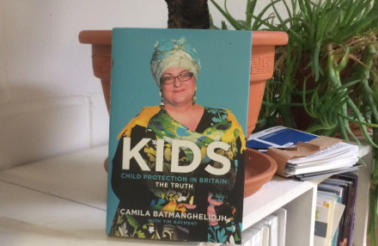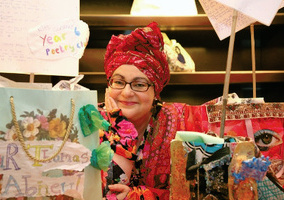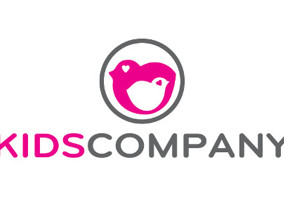Kirsty Weakley delves deeper into the claims made in Camila Batmanghelidjh’s book about Kids Company.
It is a truth universally acknowledged by journalists that anything professing to be telling ‘the truth’ is more often than not actually conspiracy-peddling nonsense.
So with that in mind we’ve taken a closer look at some of the claims made by Camila Batmanghelidjh in her book, Child Protection in Britain: the Truth.
There was a conspiracy to shut the charity down
That there was an organised campaign from within government, the civil service and the media to shut down the charity is the central theme of the book.
This allegation of a conspiracy was first made in the immediate aftermath of the collapse, when Batmanghelidjh appeared across a range of media the day after announcing the charity’s closure.
She has doubled down on this claim throughout the book and in media interviews to promote it.
In the book she writes: “I believe Kids Company was closed down malevolently and abruptly because Britain was unable to tolerate seeing its lack of welcome for vulnerable children reflected back at it.”
She accuses politicians, civil servants and the media of being involved in this conspiracy, but when pressed on the Victoria Derbyshire show on BBC2 she was unable to say with any certainty who was actually supposed to be involved.
See the Child. Change the System campaign was the catalyst
The ‘See the Child. Change the System’ campaign was launched in the summer of 2014 with great fanfare and lots of media attention.
Batmanghelidjh cites the launch of this campaign as the trigger for the conspiracy to bring about the downfall of the charity. This seems unlikely, mainly because the campaign did not actually do very much.
As part of this campaign, the charity said it was launching a task force, having secured Sir Keir Starmer to chair it and involvement from a number of other children’s charities and child protection experts. But after a year it appeared to have made little progress, with former charity partners saying that they were no longer involved.
No funding had been secured to run the task force, and no staff were working on it.
A petition, signed by 28,000, does not appear to have been delivered to anyone and the campaign’s dedicated social media feeds seem to have stopped.
So it seems that this campaign was something that the charity itself dropped well before its final funding crisis.
Newsnight ‘sat on’ abuse claims
Batmanghelidjh says that when Newsnight first found out about abuse allegations, it sat on them to suit their own timings. She says that if Newsnight had been truly concerned about child welfare it would have reported the allegations straightaway.
Chris Cook, policy editor of Newsnight, says this allegation is not true and Batmanghelidjh knows it. He says there is an email showing that he alerted the relevant authorities on the afternoon that he found out about the abuse claims in late July.
It is true that Newsnight did not broadcast the allegations until early August, but this allowed it to build a thorough case.
As Cook says in a blog on the BBC website: “As news of the investigation spread, more people came forward.”
Kids Company had 36,000 beneficiaries
The book repeatedly refers to Kids Company having 36,000 children as beneficiaries, and Batmanghelidjh stands by it.
But at the same time, Chris Cook says that local children’s service did not experience any major influx of vulnerable young people in the weeks and months after the collapse of the charity.
However the book does offer something of an explanation for this – Kids Company has a broader definition of ‘young people’ than most.
“We helped young people beyond their 30th birthday because severely traumatised children experience discrepant development. Elements of their personality become stunted by the trauma of abuse while in other areas they are highly competent.
"Our care for young people into their thirties, where appropriate, is also reflective of the latest findings in neurodevelopmental science, suggesting that the adolescent brain does not complete development until the late twenties or early thirties. Kids Company continued work with a young person until the developmental assault was ameliorated.”
The Official Receiver is currently in possession of the charity’s case files so it is ultimately impossible to settle this. But it does seem unlikely.
Government had promised to give Kids Company £20m
Batmanghelidjh reiterates her claim that the government promised a grant of £20m to make Kids Company sustainable.
She claims that this promise goes back to 2014 and was made personally by Oliver Letwin, who had recently become the Chancellor of the Duchy of Lancaster and was also minister of state for government policy.
Government records do show that in the autumn of 2014 Letwin met with Batmanghelidjh, but he denies ever promising a sum of £20m and says it must have been a “misunderstanding on her part”.
In interviews to promote the book, Batmaghelidjh said the plan had been for government to fund Kids Company in a similar way to how it supported the NSPCC’s Childline service.
This claim does not appear in the book, and it seems something of a coincidence it was made a day after the NSPCC published its annual Childline report.
It is true to say the that the government had provided a large grant to NSPCC to run Childline - a free telephone service that any child in the country can access. In 2011 the coalition government provided NSPCC with a grant worth £11.2m over five years, so it was nowhere near on the same scale as the £20m annual grant Kids Company was hoping for.
In NSPCC’s latest accounts for 2016, it says it received £1.8m in statutory income to run Childline and the Schools Service, as a performance-related grant, but it spent £21m on these services. The vast majority of NSPCC’s £110m income is in the form of donations and legacies, which accounted for £97m in 2016.
It actually seems that the couple of million that Kids Company was getting a year from the government really was quite favourable compared to the support received by Childline.
‘We had enough money’
Another claim that has been repeated frequently by Batmaghelidjh over the last few days is that at the point of closure the charity had enough money, including in reserves.
In fact, the book says: “In July 2015, Kids Company had enough money pledged by philanthropists to restructure the charity, meet all liabilities, have three months’ reserves and have confirmed income for the year ahead.”
The key word here is “pledged” - this was not money that had arrived in the charity’s bank account. It was also enough money for a scaled-down version of the charity that had been negotiated with the Cabinet Office by trustees, not to run the charity on the same scale as previously.
She writes that this “did not feel like success” because three-quarters of the staff would be made redundant.
The claim that the charity would have had three months’ reserves seems most striking, given that as a Charity Finance analysis of Kids Company’s showed, in six of the past ten years it had reported a deficit in its free reserves.
While the reserves target was six months, in reality the charity only had a fraction of that. For 20 years Kids Company had spent almost every penny it had as soon as it got it, meaning that when it ran into difficulty there was no cushion.
85p in the pound going to frontline
In the book she proudly states how much Kids Company spent on the frontline, and was critical of other large charities for spending up to a quarter of their income on fundraising and governance costs.
But as highlighted above, it was precisely this lack of investment in areas other than the frontline which contributed to its downfall. Many small charities do live hand-to-mouth, but large ones shouldn’t, and doing so for 20 years should certainly raise concerns.
She also claimed in the book that the charity only had ten fundraisers. Accounts suggest that in the three years leading up to its collapse, it was more like 18 full-time equivalent people working on activities to generate funds.
This is still low given that they had an incredibly diverse range of donors to manage, and were also acting as key workers for at least one beneficiary each.
People will be discouraged from becoming trustees
Batmaghelidjh claims that the legal action being taken against her and her former trustees, which is looking to ban them from holding company directorships, means that business people will be put off from becoming trustees.
This is impossible to evidence. But it is probably fair to say that overall the collapse of Kids Company has had a very positive effect on charity governance.
Tustees have been forced to think carefully about their responsibilities and there have been reports of trustees taking a more active role in their charities.
The sector has also been prompted to focus on improving governance support for trustees.
Fact vs fiction
It’s hard to shake the impression that Batmanghelidjh really believes what she is saying. This is her truth. But there are certainly some gaps and some confusion around her version of events.
Overall it is clear now more than ever just how unusual Kids Company was and how disconnected it was from other charities and the way they operate.
Related articles












